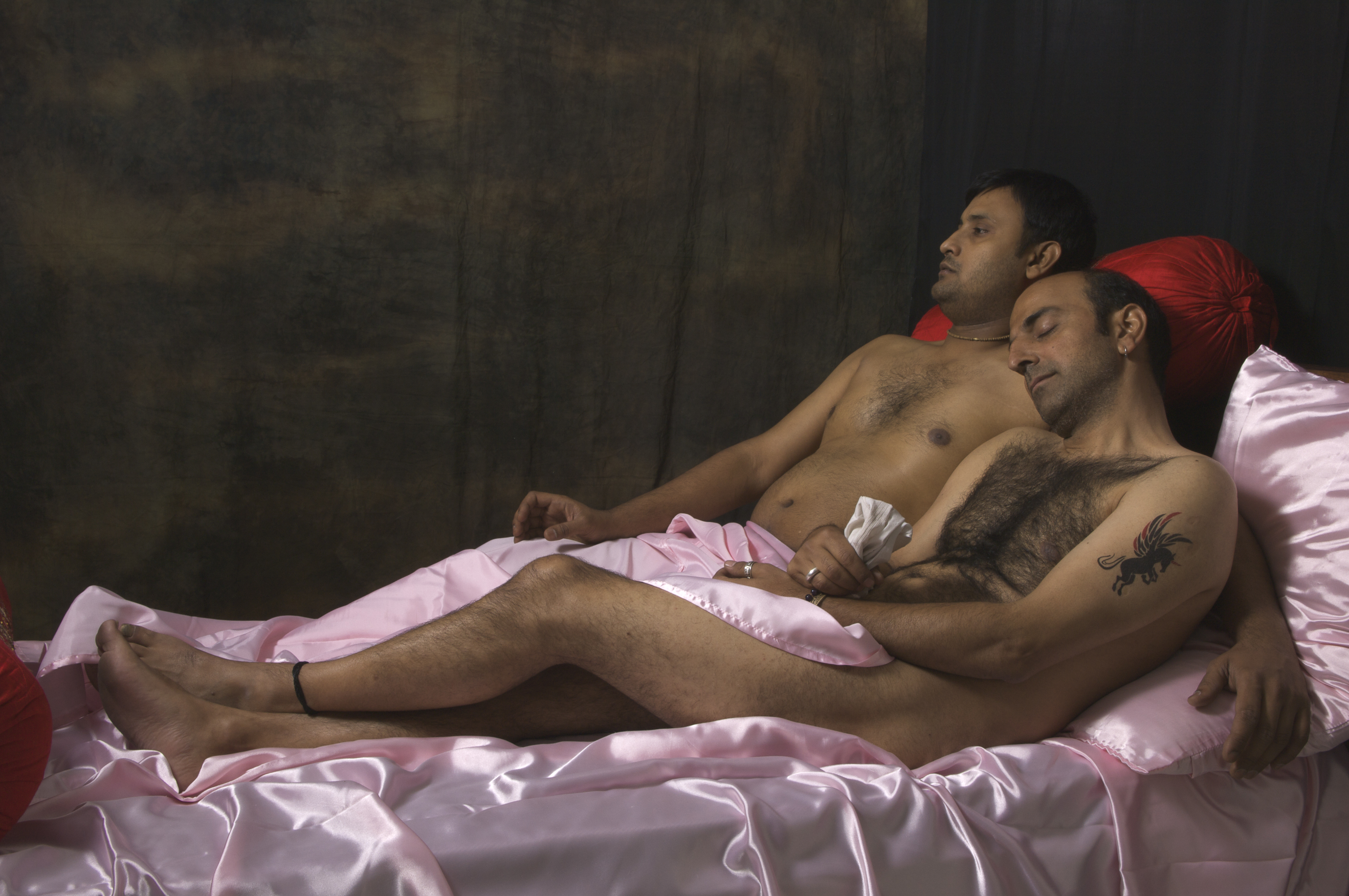Sunil Gupta is a photographer, writer and curator, seeking to promote a greater understanding of questions regarding representation, sexuality, access and cultural difference. Spanning four decades, Gupta has used photography as a critical practice, reflecting on his community through highlighting queer subjectivities through portraiture. Currently, Gupta’s focus lies on queer migration in Canada, where he spent his teenage years, introspectively exploring his journey and identity formation through photography. Throughout his artistic oeuvre, Gupta remains dedicated to foregrounding the stories of those in marginalised communities, merging personal narratives with broader social commentary.
Commissioned by Autograph Gallery, The New Pre-Raphaelites is a series of ten photographs that respond to issues surrounding Section 377 of the Indian Penal Code, criminalising homosexuality. This law, instituted by the British in 1861, led to the arbitrary arrest and exploitation of LGBTQ+ Indians and was not overturned until 2018. Gupta’s series takes inspiration from historical paintings by the Pre-Raphaelites. The staged photographic works recreate the vivid colours and strong physical presences of Pre-Raphaelite paintings but simultaneously reflect contemporary queer culture in India. Through exotically patterned backdrops, extravagant costumes and sometimes nude bodies, the images concentrate on Gupta’s chosen subjects – real people who occupy the spaces of criminal intent. Both portraits selected by Leamington Spa Art Gallery & Museum depict queer bodies not only as the protagonists, but also at a state of rest. In Untitled #13 (2008), a trans woman leans against a vermillion bolster, adorned in a sari and regal gold jewellery, while in Untitled #8 (2008), a gay couple recline nude on a sofa lined with pink silk sheets.
The collection at Leamington Spa Art Gallery & Museum includes a number of works by Pre-Raphaelite artists, who often used exotic settings and radical techniques to grapple with modernity and explore relationships. Particular connections can be drawn between Gupta’s two prints and the gallery’s popular watercolour by Simeon Solomon, Sleepers and One that Watcheth (1870).


